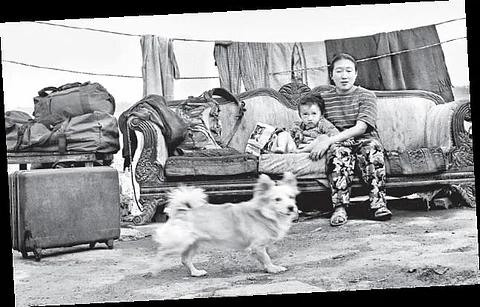

Popularly known as ‘Little Tibet’, the tiny colony of Majnu Ka Tilla (MKT)—it is located on the banks of the Yamuna—has, in time, become one of the cultural epicentres of the city. The narrow alleys are enlivened by the scores of establishments selling everything from garments to jewellery; the obscure food kiosks serving laphing (a spicy cold mung bean noodle dish) and momos that are never unoccupied; and the cosy cafes teeming with visitors. Built-in the early 1960s as a resettlement colony for Tibetan refugees, MKT has seamlessly woven itself into the fabric of the metropolis but it also gives a glimpse of the lesser-known tales of displacement and longing.
In the recently released book Majnu Ka Tilla Diaries, New Delhi-based photographer Serena Chopra manages to uncover poignant narratives of the MKT residents. Created over eight years, this book comprises photographs of the place and portraits of the residents as well as their first-hand accounts of their lives. These resident submissions, in turn, reflect the history and complex politics of the Tibetans that forms the foundation of MKT.
Capturing the voice of people
Chopra’s tryst with the area started back when she was a Delhi University student. However, she became interested in the Tibetan community only after a chance meeting with their highest spiritual leader Dalai Lama in 2006. “He [the Dalai Lama] suggested that as a photographer, I could do some work to focus on increasing awareness of the Tibetan situation. My challenge was to create a meaningful body of work that spoke out for all individuals, inexorably caught up in the aftermath of displacement,” shares Chopra, who returned to MKT in 2007. This is when she embarked on this project.
Majnu Ka Tilla Diaries takes an interesting diary-like format wherein she juxtaposes black and white photographs with text. “Black and white have the ability to transcend the familiar and sometimes narrow confines of our everyday perceptions.” The text, Chopra says, adds “immediacy and poignant urgency”; it seems as if the person in exile is speaking directly to the reader. These texts include narratives of displacement and longing, and how the community looks forward to returning to Tibet, even after six decades of living away from their homeland.
Building connections
In the process of working on this project (she decided to make this into a book later), Chopra found her own connection with the community. “I do not try to separate myself from people or their lives. The intimacy of the gaze is also caught in such a moment of sharing. I could relate to their stories and current circumstances,” says Chopra—whose “mother and entire family are from Pakistan”—and is familiar with “horror stories of the exodus [Partition of India], and the courage needed to reinvent life and cultural identity”.
Early this month, Chopra and the Offset Projects—a city-based artist initiative founded by Anshika Varma—organised a book launch and signing event at Ama Cafe, MKT—and later at Alliance Francaise, Delhi, as well as Dharamshala, Himachal Pradesh. Sharing her experience, Chopra shares that she reconnected with several residents and families after nearly 13 years. “I had a young Tibetan man come up to me and say ‘thank you for giving so much time to our story and predicament, please sign my book, my name is Jamyang’. I spelt it correctly without asking him if it was the correct spelling. He said ‘you even know how to spell my name!’